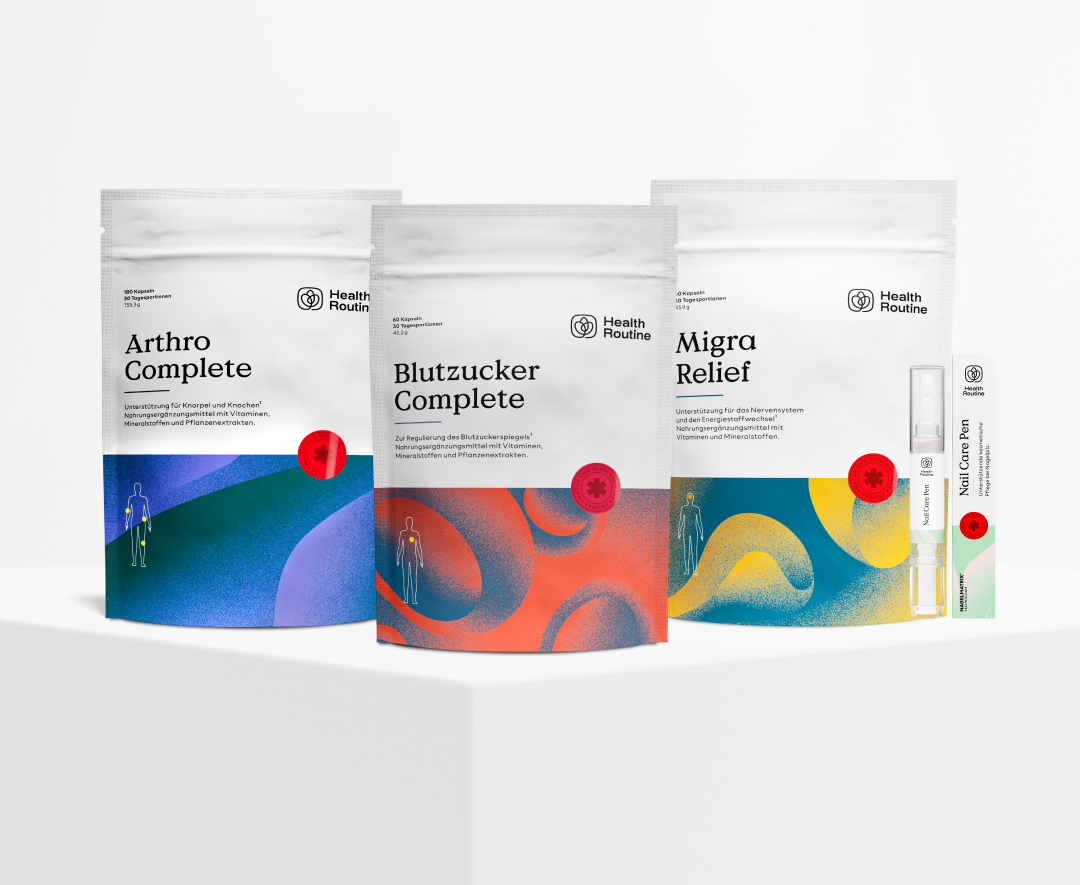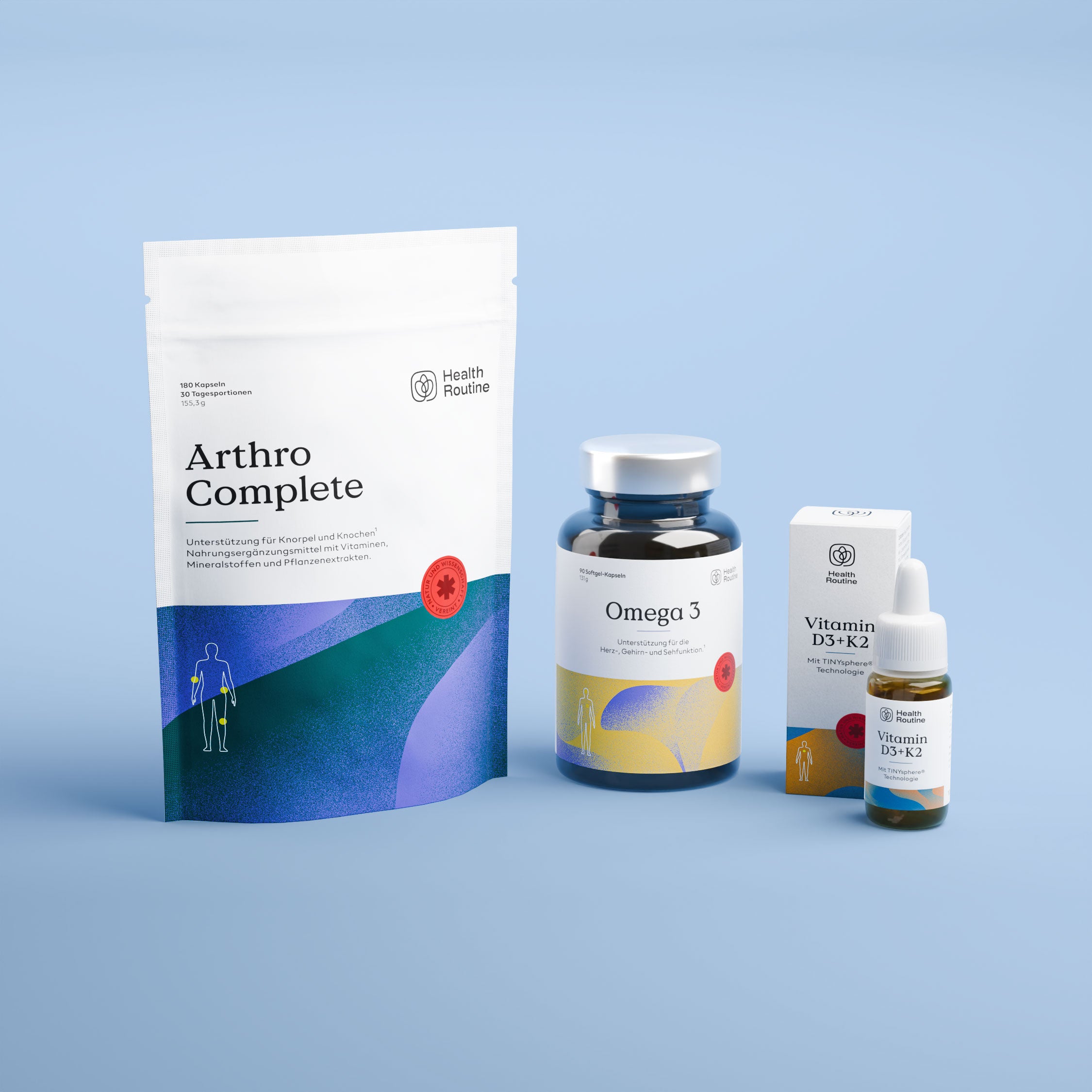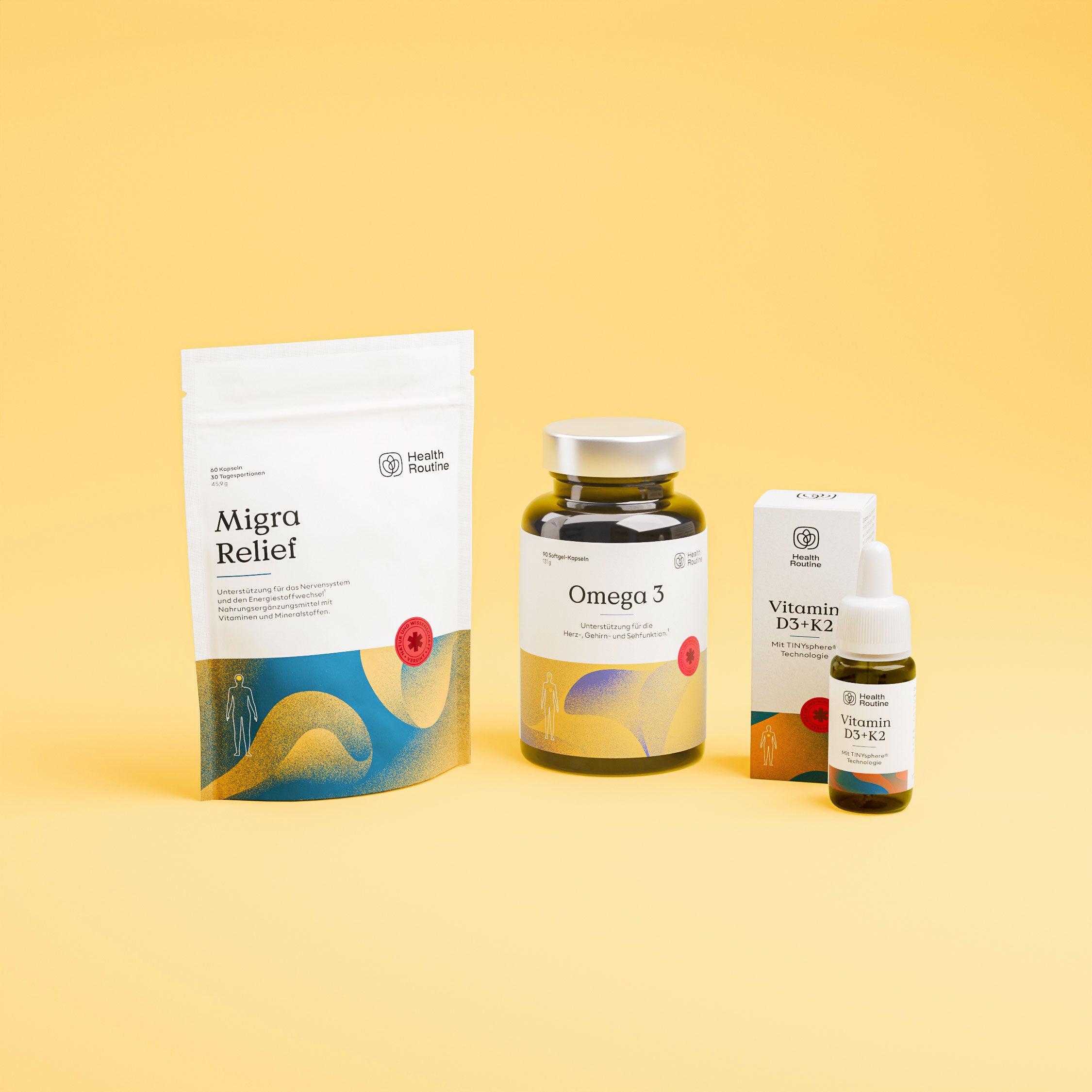The most important things at a glance
-
Warts are benign skin lesions, usually caused by human papillomaviruses (HPV).
-
There are different types of warts – from plantar and mosaic warts to flat warts and age-related warts.
-
Hygiene, targeted care and a strong skin barrier help prevent the spread.
-
The Wart Care Pen and our foot bath salts can complement your daily care routine.
Recognizing warts: What types are there?
Warts , also known medically as verrucae vulgaris, are skin growths often caused by a viral infection . They can appear on various parts of the body .
Expert advice: The different types of warts differ in size and shape.
Warts often appear on the feet, face , or hands . To help you easily identify these benign skin growths , we'll introduce you to the different types of warts below:
All about verrucas: What's behind them?
Plantar warts are particularly painful . They can grow deep into the skin, forming a kind of "thorn." This is why they are often colloquially called "thorn warts."
🌿 Occurrence: Plantar warts primarily form on the soles of the feet. However, they can also occur on the hands.
🌿 Appearance: Callus-like thickening, interspersed with black dots. Plantar warts on the sole of the foot grow inward like thorns.
🌿 Size: Inside the foot usually twice as large as visible from the outside.
🌿 Cause: Viral infection with human papillomaviruses (HPV)
🌿 Special feature: A verruca often causes severe pain when walking.
All about common warts: What's behind them?
Common warts are among the most common types of warts . In medical circles, they are also known as vulgar warts.
🌿 Occurrence: Mainly on the feet, back of the hands, fingers and nail edges
🌿 Appearance: Rough and scaly, callus-like thickening.
🌿 Size: pin- to pea-sized
🌿 Special feature: Common warts can appear anywhere on the body.
All about flat warts: What's behind them?
Flat warts are also called planar warts. As the name suggests, they are rather flat, unlike other warts .
🌿 Occurrence: Plane warts occur mainly on the face (forehead, cheeks), but also on the hands and forearms.
🌿 Appearance: Flat elevation with dotted surface, often brownish in color
🌿 Size: A few millimeters in size
🌿 Special feature: Usually occur in large colonies and mainly affect children and adolescents
All about mosaic warts: What's behind them?
Mosaic warts always occur in large numbers and form a mosaic-like pattern . Unlike verrucas, they are limited to the skin's surface .
🌿 Occurrence: soles of the feet
🌿 Appearance: White, flatter than verrucas
🌿 Size: pinhead-sized
🌿 Special feature: The incubation period (time from infection to outbreak) can last several months. Even if the mosaic warts are not yet visible, infection can still occur.
All about pedunculated warts: What's behind them?
Filiform warts , also known as verruacae filiformes, are thread-like and resemble a paintbrush. Although this type of wart is highly contagious , it is relatively rare. Since filiform warts primarily develop on the face, they primarily pose a cosmetic problem for those affected.
🌿 Occurrence: Face (often on the eye or mouth)
🌿 Appearance: Pink or white colored thread-like growth with a brown dot at the tip
🌿 Size: Up to one centimeter
🌿 Special feature: Filiform warts form “offshoots” within a very short time.
All about genital warts: What's behind them?
Genital warts (condylomata acuminata) affect only the genital and anal area , which is why they are also called genital warts. They are a sexually transmitted disease .
🌿 Occurrence: genital and anal area
🌿 Appearance: White-grey to reddish nodules
🌿 Size: 1- 5 millimeters
🌿 Special feature : Genital warts are among the most common sexually transmitted diseases. They often occur in large numbers (so-called wart patches). Genital warts can increase the risk of cervical cancer.
All about molluscum contagiosum: What's behind it?
Mollusca contagiosa ( molluscum contagiosa) primarily develops on dry and scaly skin . Therefore, people with neurodermatitis or psoriasis are primarily at risk.
🌿 Occurrence: Face, neck, arms and legs
🌿 Appearance: Skin-colored to light red nodules
🌿 Size: pinhead-sized
🌿 Special feature : Unlike most other types of warts, molluscum contagiosum is not caused by human papillomaviruses, but by a poxvirus.
All about age spots: What’s behind them?
Unlike other types of warts, age warts are not caused by viruses and are therefore not contagious . As the name suggests, they primarily occur in older people.
🌿 Occurrence: face, back, chest
🌿 Appearance: Oval to round, brown to black, with jagged surface
🌿 Size: lentil to bean sized
🌿 Special feature: Age spots typically develop after the age of 50. They are aggravated by UV radiation.
Symptoms & first signs
"Warts do not cause any symptoms in the early stages."
Most types of warts remain relatively unnoticeable beyond this time. However, plantar warts can cause severe pain when walking.
Common warts and mosaic warts can be noticeable through itching . This often occurs before the warts are visible on the skin and is therefore an early sign of skin growth.
The most common causes of warts
Most warts are caused by human papillomaviruses (HPV) . They are transmitted through contact infections and penetrate deeper layers of the skin through fine cracks or small injuries .
Infection usually occurs through direct skin contact, such as when shaking hands, or through contaminated objects such as towels, door handles, etc.
The risk of infection is particularly high in warm, humid environments (swimming pools and saunas). Walking barefoot can make you particularly susceptible to wart viruses.
Age spots, on the other hand, are not caused by viruses. The exact cause has not yet been determined. However, scientists suspect that several factors contribute to the development of age spots. Genetic predisposition and the aging process are currently the main focus.

Treatment: What really helps?
Many sufferers rightly ask themselves: “What can be done about warts?” In conventional and holistic medicine, various forms of therapy are available:
-
Freezing warts: This method involves applying liquid nitrogen to the wart, which is intended to kill it. However, this treatment can also destroy the surrounding skin tissue, and sufferers often describe the chances of success as poor.
-
Wart removal: For very deep verrucas, surgical removal is an option. This often creates very large holes in the foot, which require a considerable amount of time to heal. Those affected then typically rely on crutches for extended periods.
- Treating warts naturally: Holistic medicine practitioners recommend a natural and gentle treatment for warts. Using proven medicinal plants and natural remedies, most warts can be treated at home – completely risk-free, pain-free, and without side effects! We'll show you how!
Expert tip: Foot bath before wart treatment
Before treating warts, you should soak your hands or feet in salt . This optimally prepares the skin. Our foot bath salt Contains all ingredients used in naturopathy for accompanying therapy.
➽ The sea salt it contains can have antiseptic and anti-inflammatory effects.
➽ Baking soda supports the skin’s natural pH value.
➽ Tea tree oil is said to have cleansing and antiviral properties.
➽ Eucalyptus and peppermint are also considered antibiotic and antiviral medicinal plants in natural medicine.
Thanks to the balanced formula, you can support your wart treatment in a beneficial way with the all-natural foot bath salt from Health Routine.
Home remedies for wart treatment: myth or truth?
Medicinal plants have played a central role in holistic medicine and naturopathy for thousands of years. Long before chemical remedies were invented, humans harnessed the power of plants to support the body's natural healing abilities.
The following components from phytotherapy have proven particularly effective in the treatment of warts :
-
Almond oil is particularly kind to the skin and nourishes even sensitive skin. Thanks to its valuable ingredients such as vitamins and unsaturated fatty acids, it provides your skin with essential nutrients. In addition, almond oil is said to have antiviral and antifungal properties.
-
Thuja oil is considered an effective aid in natural medicine for successfully combating warts. It can also help strengthen the immune system.
-
Tea tree oil has an antiseptic effect and is used cosmetically to treat warts on the feet and other parts of the body.
-
Castor oil has disinfectant and immune-boosting properties. Even in ancient times, Greek physicians considered it a valuable aid in the treatment of warts.
-
Juniperwood oil supports viral infections and helps rebuild a weakened skin barrier. It also provides soothing relief from skin irritations.
- Wintergreen consists largely of methyl salicylate, which can soften calloused skin.
Expert advice: Please note that in natural medicine, a combination of medicinal plants is often preferred because of their synergistic effects. This means that the natural active ingredients support each other and work best in combination.
Because we at Health Routine always strive to combine the best of nature with the latest scientific research, our Wart Care Pen contains all of the ingredients mentioned.
It's incredibly easy to use: simply apply to the affected areas up to three times a day and let it work. Done.
When should you see a doctor?
Successfully treating warts can take some time . Plantar warts, in particular, are often very stubborn . If you have any concerns, questions, or if the warts are painful, you should always seek medical advice.
Warts on the face or eyes, in particular, often require medical attention. Diabetics should also consult their dermatologist for wart removal.
Wart prevention: What everyone should know
When several people live together in one household , warts can often spread rapidly . This is no surprise, given that these viral infections are highly contagious.
It's all the more important that those affected know the following tips. This not only reduces the risk of infection but also prevents recurrence:
Prevent warts:
🌿 Never walk around barefoot in unfamiliar surroundings (swimming pool, sauna, hotel room, etc.).
🌿 Always dry your feet and hands thoroughly after washing. Don't forget to dry between your toes.
🌿 Provide your skin with sufficient moisture. An optimal skin barrier prevents the penetration of fungi, bacteria, and viruses. Our Feet Care Spray with purely natural active ingredients supports your daily foot care. Simply spray on. Done.
🌿 Support your immune system with vitamins, minerals and Omega 3 capsules .
Reduce the risk of infection for others:
🌿 Make sure that other family members do not come into contact with your washcloths and towels.
🌿 Wash all textiles (including towels and washcloths) at least 60 degrees to kill the viruses.
🌿 Cover your wart with a plaster when bathing, showering or swimming.
🌿 Don't walk around barefoot.
🌿 If you touch the wart, wash your hands thoroughly afterwards.
How effective is the HPV vaccination?
HPV vaccinations have been increasingly recommended recently. However, you should be aware that this can only reduce the risk of cervical cancer, which is slightly increased by genital wart infection.
It cannot protect against the development of genital warts or against infection with other types of warts . The vaccination also has no effect on warts on the face or other parts of the body.
Who is particularly susceptible to warts? Overview of risk groups
Not everyone who comes into contact with HPV will necessarily develop warts on their feet, hands, or face. However, those who fall into one of the following risk groups should pay particular attention to the protective measures listed above:
- Athletes using communal showers
- In case of acute skin warts in the family
- Weakened immune system
- Neurodermatitis, psoriasis
- diabetic
- smokers
How common are warts?
Warts are among the most common infections in children and adolescents worldwide. However, warts are also relatively common in adults.
Typical course
While research on the course of the disease in adults is relatively limited, empirical evidence shows that warts can be easily controlled in those with a strong immune system.
If you want holistic support when fighting warts, the Wart Care Pen is the ideal companion at your side.
It's impossible to generalize how long treatment will take until the warts disappear completely. This depends largely on the type of wart and your general physical condition.
Conclusion
Removing skin warts can be a challenge for those affected, especially if the desired results aren't immediate. But since you've read this far in our article, you have the necessary ambition and discipline.
This gives you the best conditions for successfully treating warts on your feet, hands, or other parts of your body. Our foot bath salts, like our Feet Care Spray, are just as effective. and the Wart Care Pen as valuable support.
FAQ
Can warts go away on their own?
Under favorable conditions, warts will go away on their own. However, this depends largely on the type of wart and your immune system. It can take up to a year to completely get rid of the warts without appropriate treatment.
How long does it take for a wart to go away?
There's no general answer to how long it takes for a wart to disappear. It depends on the type of virus.
Are warts contagious?
Most warts (except age warts) are contagious.
🌿 Discover more guides from Health Routine now:
- Caring for your feet: Expert tips for optimal foot care
- Wellness for your feet » The best tips for relaxation
Your medical advice
Our products are not intended to diagnose, treat, cure, or prevent any disease. The information provided in this article is for informational purposes only and is not intended as a substitute for advice from your physician or other healthcare professional.
Furthermore, our products are not a substitute for medications or other treatments prescribed by your doctor or healthcare provider. Regardless of the due care taken, no liability or warranty is assumed for the
- Accuracy,
- topicality,
- completeness
- and availability of the information provided.
No legal claims can be made for any damages potentially resulting from the use and application of this information. Liability claims of any kind are excluded.






